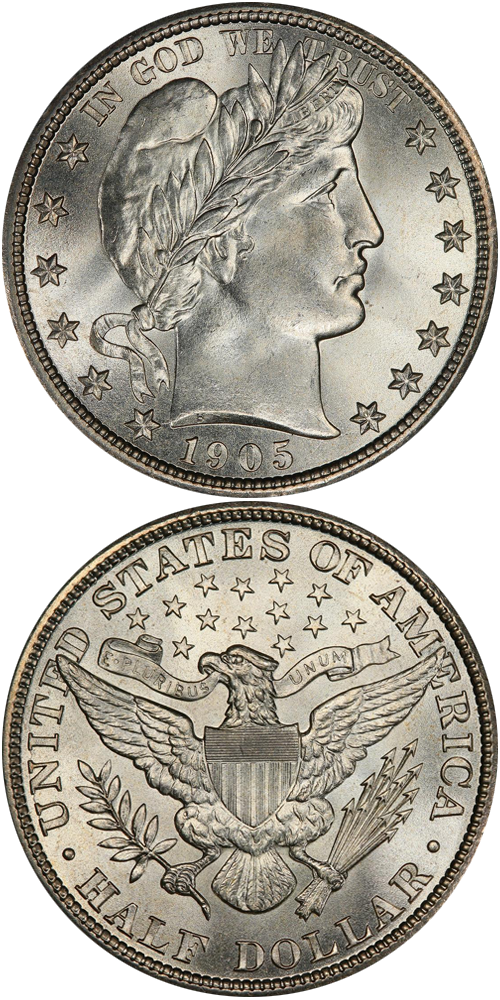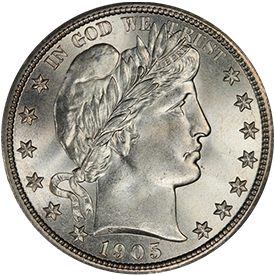Designed by: Charles E. Barber
Issue Dates: 1892-1915
Composition: 90% silver, 10% copper
Diameter: 30.6 mm
Weight: 12.50 grams (192.90 grains)
Edge: Reeded
Business Strike Mintage: 135,916,889
In 1892 the half dollar was redesigned to the so-called Barber type. Designer Charles E. Barber's Miss Liberty now faces right, her hair is in a Phrygian cap, and a wreath of laurel encircles her head. The word LIBERTY appears on a small band or ribbon above her forehead. IN GOD WE TRUST is above, six stars are to the left, seven stars are to the right, and the date is below. The reverse is an adaptation of the Great Seal of the United States and features a heraldic eagle grasping an olive branch and arrows and holding in its beak a ribbon inscribed E PLURIBUS UNUM. A galaxy of stars is above. UNITED STATES OF AMERICA and HALF DOLLAR surround. The same head of Miss Liberty appears on dimes and quarters of the era. Mintage was continuous at the Philadelphia and San Francisco Mints from 1892 through 1915, with additional pieces being supplied for many years by New Orleans and Denver.
The type set collector will encounter no difficulty in acquiring specimens in grades of Good or Very Good. Fine pieces, believe it or not, are scarce, Very Fine coins are very scarce, and Extremely Fine coins can be called rare in the context of modern issues. AU coins are rarer yet, Uncirculated pieces are still more rare, and superb Uncirculated pieces are very rare. Proofs exist in proportion to their original mintages. The reason for the rarity of higher-grade circulated pieces is that the buying power of the half dollar was equivalent to roughly $10 or so today, so coins from nickels to half dollars were the equivalent of $1, $5 and $10 bills, and once they entered circulation, they tended to stay there and incur heavy use. People did not toss change into a jar and let it accumulate as they do today. You could start the day with a few nickels, dimes, quarters or halves in your pocket, and easily “make it through the day.”







